Table of Contents
Human health depends on the total of the many “small” decisions we make daily, in other words, our lifestyle. Generally speaking, the choices that most affect our health depend on the foods we eat. There are so many alternatives available that we must continually decide which foods to select and how they are best prepared.
Information + Correct Choices = Health: The more comprehensive the information we have regarding available foods, the simpler it is to make the best selections for health.

Harmful Foods, Beneficial Foods
People need food during their lives. While all foods give nutrients and energy, some can cause disorders and diseases; others bring health and healing. Consequently, there are harmful foods and, of course, beneficial foods. It is vital to understand foods well to choose those that sustain our health, which is so vulnerable today, and those that treat numerous diseases. This website is designed to provide that understanding.
Foods and Health Sources
Humans can adapt to eating almost anything, whether mineral, vegetable, or animal. But simply because something can be eaten does not mean this may be done without risking good health.
From the mineral kingdom: Water and salt are two foods (in the broad sense of the word) of mineral origin. Unlike other food, water, and salt do not originate from living things.
From the vegetable kingdom: These foods are healthier and have the most healing potential. Different types of vegetables can be utilized as food:
- Seaweed – These are eaten whole, microscopic single-cell (such as spirulina) or multicellular such as the rest of the seaweed.
- Higher plants – Customarily, these foods are a part of the plant: fruit, seed, bulb, root, etc.
- Fungi – Although they are grouped with foods of vegetable origin, fungi belong to an independent kingdom with its characteristics. Those fungi used as food are:
Certain microscopic fungi, such as brewer’s yeast, belong to the class Ascomycetes.
– mushrooms are, in reality, only a part (fruity body) of higher fungi.
From the animal kingdom: Certain aquatic and land animals’ secretions, eggs, and meat can be used for food. However, not all of them are beneficial.
- The milk of various species of mammals and the dairy products made from it.
- Honey and other secretions of certain insects, such as bees.
- The eggs of some birds, especially those belonging to the family Galinaceae.
- The eggs of certain fish, such as the sturgeon (caviar).
- The meat of various fish, mollusks, amphibians, and crustaceans.
- The meat and other body tissues of aquatic (whale) or land (lamb) mammals.
Comparison of Foods of Vegetable and Animal Origin
| Vegetable | Animal Origin | |
| Healing | Yes. In addition to their nutritional properties, they act pharmacologically like medicinal plants. | Only very few and only in particular cases. |
| Living | High. To gain one calorie of animal-based food, providing seven calories of vegetable-based feed to livestock or fowl is necessary. | Their cells are dead when eaten. Decay begins in these cells at the moment of the animal’s death. |
| Chemical contamination | Generally speaking, this is very small and external; as a result, peeling or thorough washing can eliminate it. | More significant than with vegetables since animals retain and concentrate contaminants they consume. |
| Harmful components | Generally, they contain few and are of low toxicity. Any that may be present are typically removed by soaking or cooking. | It may contain potent and dangerous toxins, particularly in seafood and some fish. |
| Depletion of natural resources | Production requires few natural resources. Some crops, such as legumes, do not even need fertilizer. | High. To gain one calorie of animal-based food, it is necessary to provide seven calories of vegetable-based feed to livestock or fowl. |
| Antioxidant action | Meat, seafood, and fish do not act as diuretics. On the contrary, they add waste material to the organism. | Contains only a trace of antioxidants. |
| Diuretic | It promotes the elimination of numerous prejudicial substances, such as uric acid and urea, that are the by-products of metabolism. It also purifies and detoxifies the blood and tissues. | It promotes the elimination of numerous prejudicial substances, such as uric acid and urea, that are the by-products of metabolism. It also purifies and detoxifies the blood and tissues. |
| Na/K quotient (sodium/potassium) | Low, since they contain much more potassium than sodium. This contributes to its diuretic and antihypertensive effects. | High. Dairy products, fish, seafood, and meats contain more sodium and less potassium than vegetables. Their regular consumption may lead to hypertension. |
| Ca/P quotient (calcium/phosphorous) | High, thus contributing to the fixation of minerals in the bones. | Low. Since they contain much more phosphorous than calcium, fish, seafood, and meat act as decalcifiers. |
| Cholesterol | No vegetable food contains cholesterol; not even those rich in fats such as nuts. Additionally, they help lower blood cholesterol levels. | Cholesterol is only observed in foods of animal origin. All animal secretions and tissues except honey and other beehive products contain cholesterol. |
| Heart | Heart health and helps avoid arteriosclerosis. | Milk products, eggs, and meat are associated with coronary disease. |
| Cancer | Contain substances that counteract the effect of carcinogens consumed as an ingredient of other foods or as a consequence of environmental pollution. Additionally, they stop the development of cancerous cells. | No vegetable food contains cholesterol, not even those rich in fats such as nuts. Additionally, they help lower blood cholesterol levels. |
The Healing Power of Vegetables
Discover the natural pharmacy in your pantry. The following presents some of the healing properties of vegetable foods.
1. Diuretics:
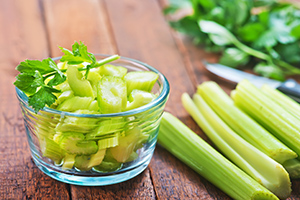
- Celery – increases urine production, aids kidney function, and reduces edema.
- Other diuretic foods – eggplant, melon, watermelon, leeks, and asparagus.
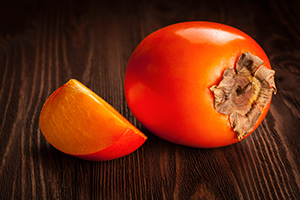
2. Astringents:
- Persimmon – Contains tannins that dry the intestinal mucosa and mucilage that softens it.
- Other astringent foods – quince, apple, caimito, pomegranate, and loquat.
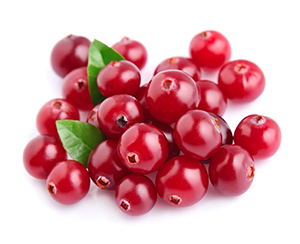
3. Urinary antiseptics:
- Cranberry – Counters the effects of cystitis and other urinary infections without activating bacterial resistance.
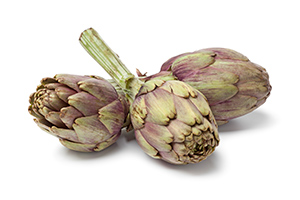
4. Hepatic tonic:
- Artichoke – increases bile flow and detoxifies the liver.
- Other foods that act as hepatic tonics are loquats and cardoons.

5. Mineral restorers:
- Coconut – very rich in magnesium, calcium, and phosphorus.
- Other minerals-restoring foods – almonds, alfalfa, cabbage, oranges, and turnip greens.
6. Hypolipidemic:
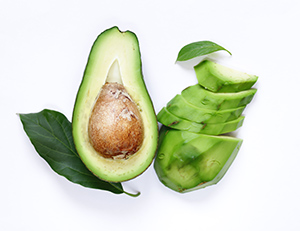
- Avocado – is antianemic, protects the digestive lining, and acts as a tonic in addition to lowering blood cholesterol and triglyceride levels.
- Other hypolipidemic foods – beans, English walnuts, sunflower seeds, and yams.
7. Antioxidants:
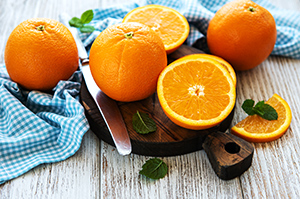
- Oranges – contain four potent antioxidants: vitamin C, beta-carotene (provitamin A), flavonoids, and folic acid. They help avoid arteriosclerosis and thrombosis.
- Other antioxidant foods – strawberries, citrus fruits, and nuts.
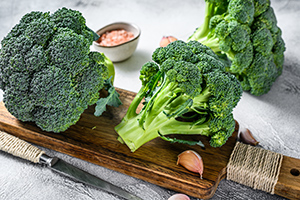
8. Anticarcinogens:
- Broccoli – its phytochemicals retard or stop the growth of cancerous cells.
- Other carcinogenic foods are cauliflower, cabbage, oranges, lemons, plums, grapes, and tomatoes.
9. Digestives:
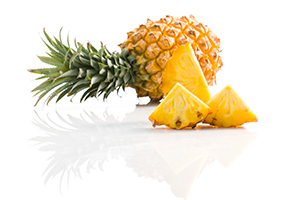
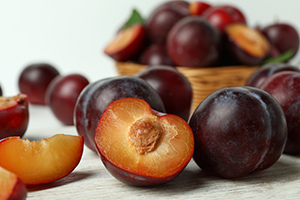
10. Laxatives:
- Plums – stimulate intestinal function.
- Other laxative foods – eggplant, chard, and whole grain cereals.
11. Antianemics:
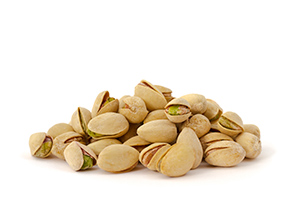
- Pistachios – Consists of as much iron as lentils, copper, and other factors that stimulate blood production.
- Other antianemic foods – red beets, apricots, passion fruit, spinach, and lamb’s lettuce.
Healing Foods
Plant-based foods, like medicinal plants, contain substances that produce pharmacological effects similar to any other medications, but with these advantages:
- They prevent and correct the tendency toward disease and have curative properties.
- Generally speaking, they have no side effects.
Frequently Asked Questions
We often hear about ‘superfoods.’ Do they exist, or is it a marketing ploy?
“Superfood” is more of a marketing buzzword than a scientific classification. While some foods boast a higher concentration of certain nutrients, no single food holds the key to perfect health. A balanced diet full of variety is far more important. Some foods, like blueberries (rich in antioxidants) and salmon (packed with omega-3 fatty acids), offer unique benefits.
How does gut health tie into what we eat?
Your gut is home to trillions of bacteria, collectively known as the microbiome. These microbes significantly affect digestion, immunity, and even mental health. Research suggests a diet rich in fiber (whole grains, fruits, and vegetables) and fermented foods like yogurt and kimchi can nurture a healthy gut microbiome.
Can food really affect our mood and brain function?
Absolutely! The connection between foods and health extends to our brains. For example, studies have shown that a Mediterranean diet, rich in fruits, olive oil, vegetables, and fish, reduces the risk of cognitive decline. Definite nutrients like omega-3 fatty acids & B vitamins are also crucial for brain health.
What’s the deal with organic foods? Is the extra cost worth it for our health?
While organic foods may have lower pesticide residues, the current evidence on whether they offer significant health benefits compared to traditionally grown foods is mixed. Some studies imply that organic foods may have higher levels of certain nutrients, but more research is needed.
Are there foods that can help us fight off diseases like cancer?
While no food can guarantee protection against cancer, certain foods contain compounds that may have cancer-fighting properties. For example, cruciferous vegetables like cauliflower and broccoli contain sulforaphane, which has been studied for its potential to inhibit cancer cell growth.
We hear a lot about antioxidants. What are they, and why are they important?
Antioxidants defend our cells from harm caused by harmful molecules called free radicals. This damage is linked to aging and various diseases. Foods like dark chocolate, berries, and green tea are excellent sources of antioxidants.
Is it true that certain foods can worsen inflammation in the body?
Yes, certain foods can trigger or worsen inflammation. Processed foods excessive in sugar, refined grains, and unhealthy fats are known culprits. On the other hand, foods like fatty fish, leafy greens, and berries have anti-inflammatory properties.
What simple swaps can I make to improve my overall diet?
1. Move away from sugary drinks and drink water or unsweetened tea.
2. Replace refined grains with whole grains.
3. Select grilled or baked foods instead of fried.
4. Pick fruits and vegetables as snacks instead of chips and cookies.
Are there any specific foods I should avoid altogether?
While no food needs to be entirely off-limits, limiting or avoiding highly processed foods, sugary drinks, and extreme amounts of red and processed meats is wise. These have been linked to various health problems, such as heart disease, type 2 diabetes, and certain cancers.
I’m overwhelmed by all the conflicting information about foods and health. What’s the bottom line?
Focus on forming a balanced diet rich in whole foods, for instance, plenty of fruits, vegetables, whole grains, lean protein, and healthy fats. Limit processed foods, added sugars, and damaging fats. And remember, variety is key! Enjoy a comprehensive range of foods to ensure you get all the nutrients your body needs.
DISCLAIMER: All content on this website is presented solely for educational and informational objectives. Do not rely on the information provided as a replacement for advice, diagnosis, or treatment from a qualified medical expert. If you are pregnant, nursing, or have any preexisting medical concerns, talk to your doctor before using any herbal or natural medicines.
REFERENCES
- George D. Pamplona-Roger, M.D. “Encyclopedia of Foods and Their Healing Power.” George D. Pamplona-Roger, M.D. Encyclopedia of Foods and Their Healing Power. Trans. Annette Melgosa. Vol. 1. Chai Wan: Editorial Safeliz, 2005. 25, 26, 27, 28, 29. Print. [foods and health]
- The American Gut Project: An ongoing research project studying the human microbiome. http://americangut.org/
- The Nutrition Source (Harvard T.H. Chan School of Public Health): A wealth of information on nutrition and health. https://www.hsph.harvard.edu/nutritionsource
- Academy of Nutrition and Dietetics: The largest organization of food and nutrition professionals. https://www.eatright.org
- World Cancer Research Fund/American Institute for Cancer Research (WCRF/AICR): Provides evidence-based recommendations for cancer prevention through diet and lifestyle. https://www.wcrf.org
